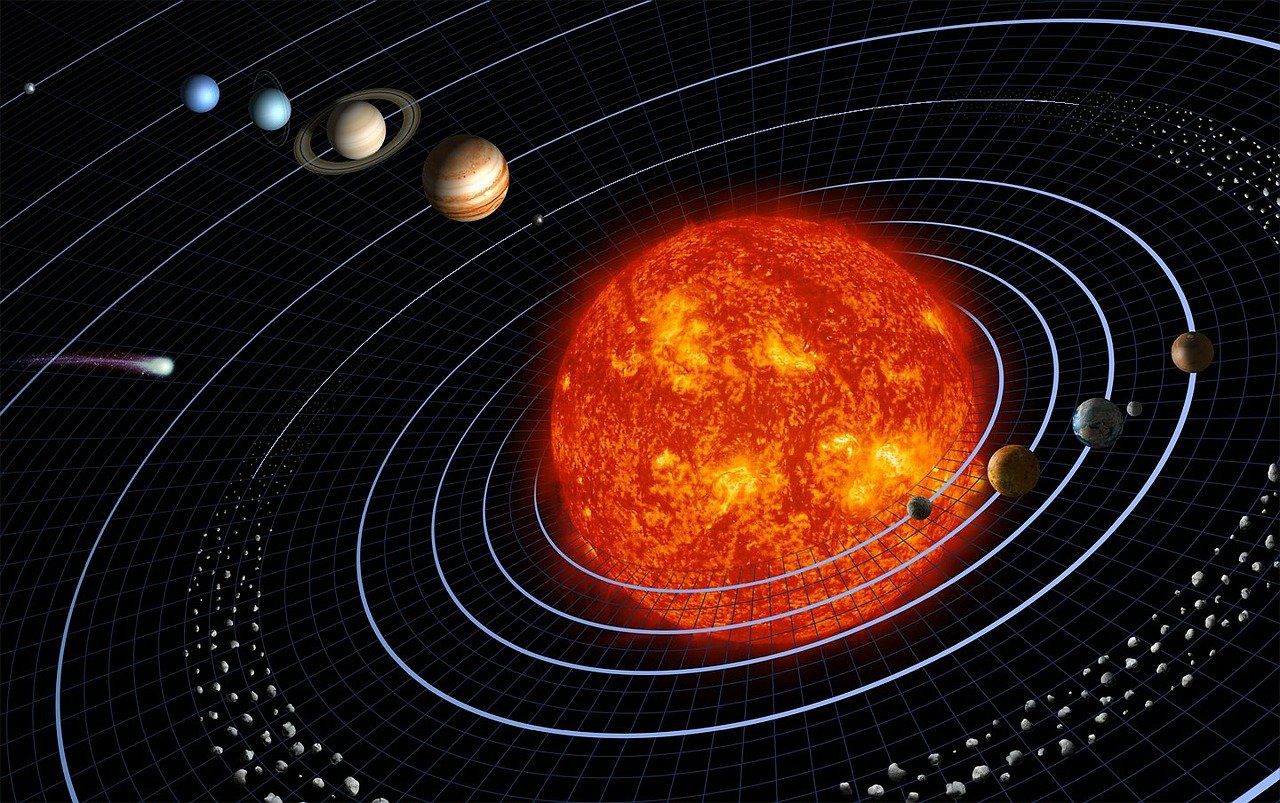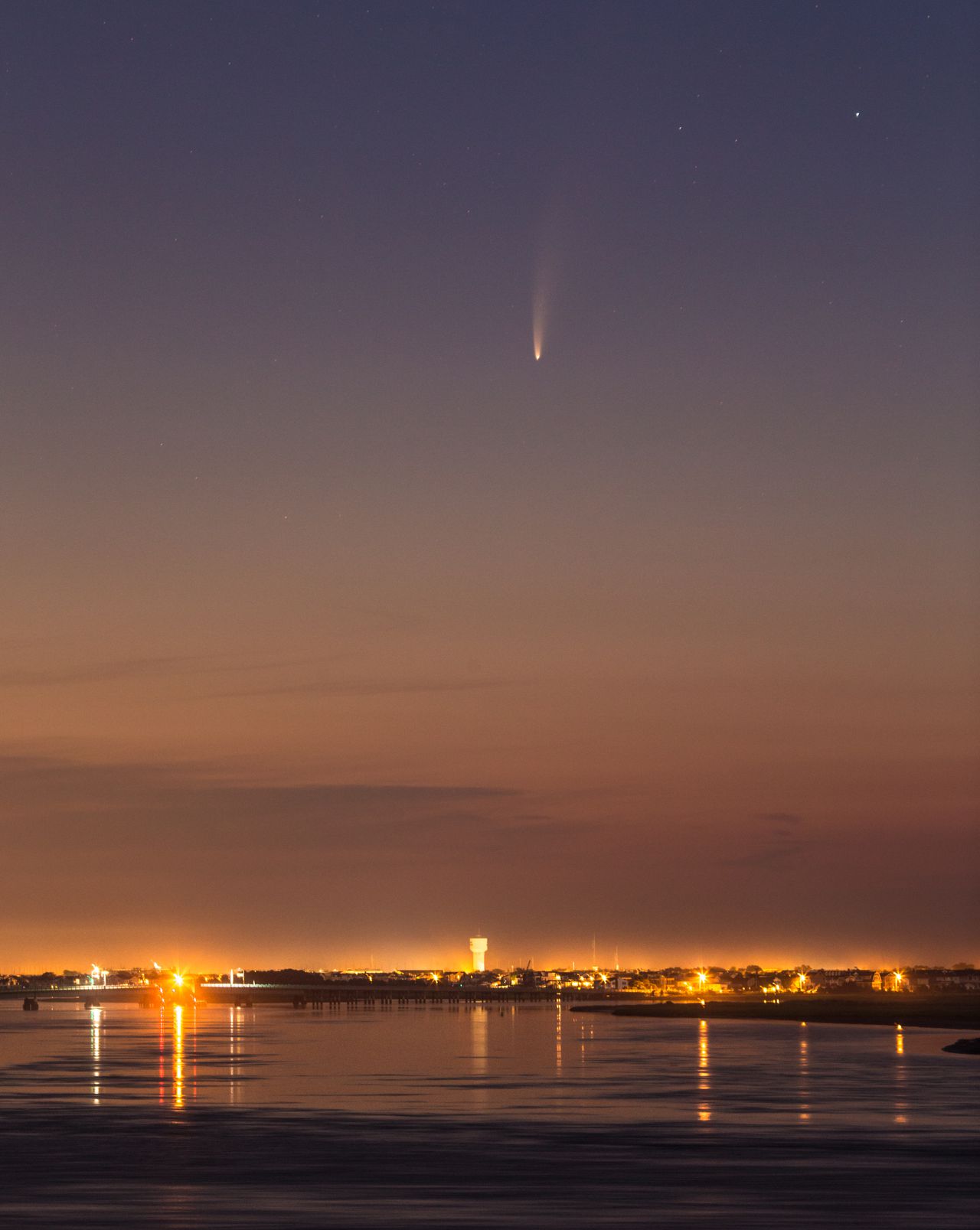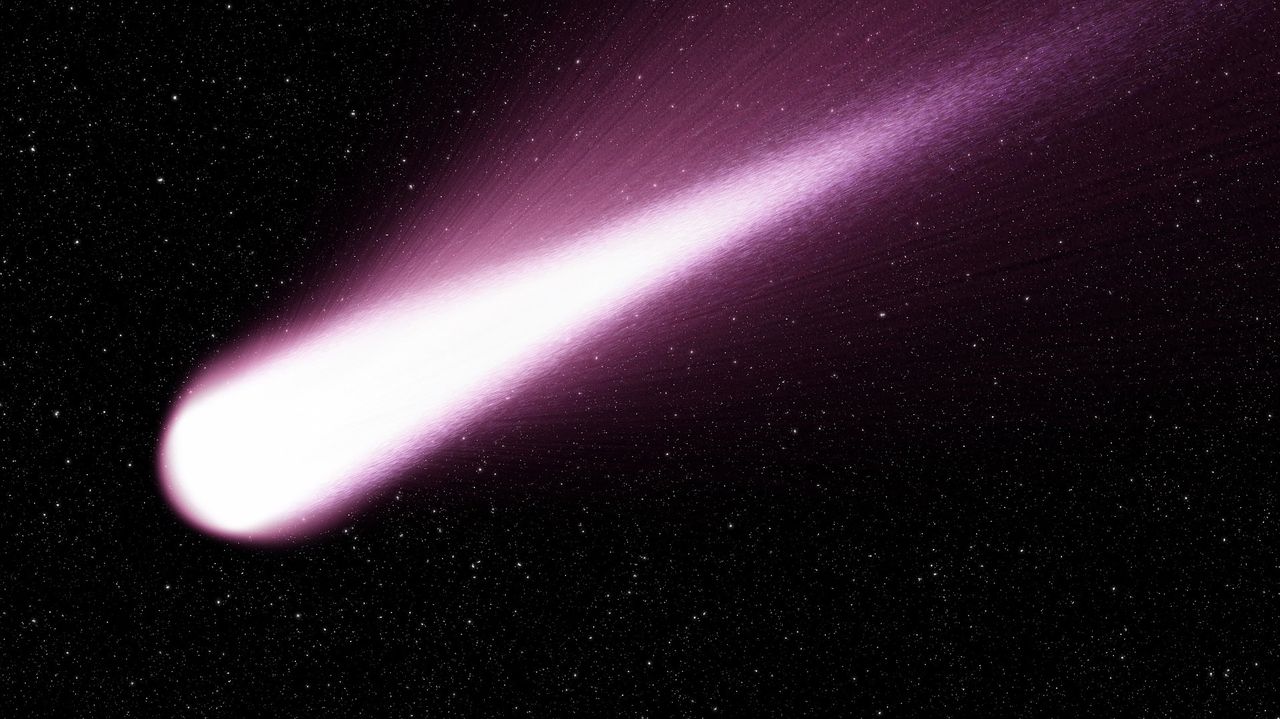Bright green comet to streak across the night sky in January and February – NJ.com
Keep your eye on the night sky. A newly discovered comet that hasn’t streaked across our region of the solar system since the last ice age will be paying a visit this month and in early February, according to astronomy experts.
Although the cosmic snowball — known as Comet C/2022 E3 (ZTF) — probably won’t be as bright as the 2021 “Christmas comet” or the 2020 Comet known as NEOWISE, experts from NASA say it should become bright enough in the coming weeks to be seen by people here on Earth with just the naked eye.
Comet C/2022 E3 (ZTF) was first spotted by astronomers using a powerful wide-field camera system in March 2022 as it sped across the outer solar system, near Jupiter. Experts say the comet is expected to move closer to the inner solar system — where our planet is located — this month.

A newly discovered comet known as Comet C/2022 E3 (ZTF) might be visible in the night sky in January and early February 2023, experts say.WikiImages | Pixabay
When to see the comet
Astronomy experts from EarthSky.org say the bright green comet will reach its closest point to the sun on Thursday, Jan. 12, 2023, and will reach its closest point to our planet on Thursday, Feb. 2. On that day, the comet will be about 27 million miles away from the Earth.
“So January and February are prime times to view this fuzzy, icy visitor from the outer solar system,” EarthSky says.
If you live in the United States, or anywhere else in the northern hemisphere, the best time to look for the comet will be in the early morning, when the sky is still dark, according to Preston Dyches from NASA’s Jet Propulsion Laboratory.
Experts from EarthSky agree that stargazers may be able to spot the comet in the hours after midnight and before dawn. For the best shot of seeing this rare cosmic object, people in the northern hemisphere should look “in the northern part of the sky below the Big Dipper” during pre-dawn hours, according to a report by IGN.com.
Although many experts believe the comet will turn bright enough for people to see with the naked eye, some say binoculars or telescopes may be needed.
“Whether or not one will actually be able to see it will depend on a variety of factors, including location and light pollution from both natural and artificial sources,” Space.com notes.
Some say Jan. 21 could be an ideal morning or night to look for this rare comet, because the sky will be very dark — thanks to the new moon phase. The moon will only be 3% illuminated on Jan. 20 and just 1% illuminated on Jan. 22, so those also could be good viewing nights or mornings.

A newly discovered comet known as Comet C/2022 E3 (ZTF) might be visible in the night sky in January and early February 2023, experts say. Another new comet, called NEOWISE, can be seen in this photo as it was streaking across the sky over North Wildwood in southern New Jersey early in the morning on July 8, 2020. Chris Bakley
What is a comet?
NASA describes comets as “cosmic snowballs of frozen gases, rock and dust that orbit the sun.”
“When a comet’s orbit brings it close to the sun, it heats up and spews dust and gases into a giant glowing head larger than most planets,” the space agency notes. “The dust and gases form a tail that stretches away from the sun for millions of miles.”
Comet C/2022 E3 (ZTF) was discovered on March 2, 2022 by two astronomers working at the Palomar Observatory in Southern California, according to Space.com. “After enough observations were gathered to compute an orbit, astronomers determined C/2022 E3 to have an orbital period of roughly 50,000 years.”
That means this comet hasn’t zipped through our sector of the solar system in tens of thousands of years.

A newly discovered comet known as Comet C/2022 E3 (ZTF) might be visible in the night sky in January and early February 2023, experts say.Pixabay
Livestream video planned
Worth noting: If your view is blocked by clouds, or if it’s too cold to go outside to look for the comet, you can see it online. A free livestream, hosted by the Virtual Telescope Project, is scheduled to start at 11 p.m. Eastern time on Jan. 12.
The livestream can be viewed on the Virtual Telescope Project’s website or the organization’s YouTube channel.
Thank you for relying on us to provide the local news you can trust. Please consider supporting NJ.com with a subscription.
Len Melisurgo may be reached at LMelisurgo@njadvancemedia.com.
Have a news tip? Tell us at nj.com/tips.






